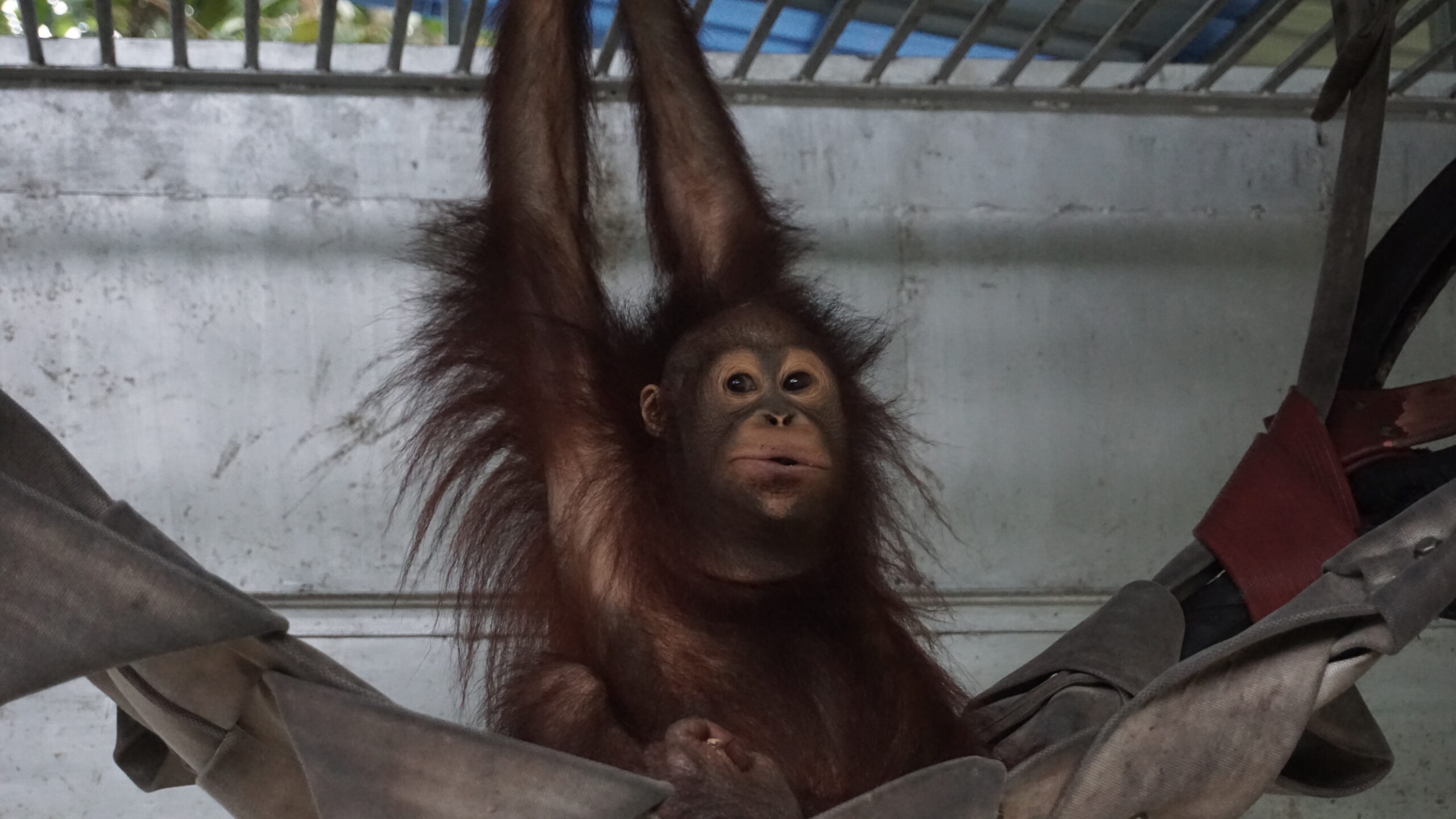
BANIR
Banir, a 4-year-old female orangutan, was previously the only orangutan of her age who had not yet participated in forest school on a regular basis. This was due to her close bond with her mother, Benazir, with whom she still shared an enclosure. Several attempts were made to bring Banir and Benazir to forest school together, but unfortunately, these efforts always ended with the two of them breaching the electric fence that marks the forest school boundaries. This behavior posed a significant risk, as it could lead them outside the designated rehabilitation training area.
Given the situation, the behavior team, animal keepers, and veterinary team held discussions and ultimately decided to try separating Banir from her mother. The transfer was carefully carried out by the veterinary team, and Banir was then placed in a new group consisting of Seko, Julia, and Otan—all orangutans around her age.
Since joining her new group, Banir has shown a good ability to adapt. This may be her first real experience living and interacting with orangutans her own age. She appears to enjoy playing with her new friends. Banir has been active and enthusiastic during these interactions, engaging in activities such as swinging in the enclosure, chasing one another, and play-wrestling.
Following the transfer, the team also reintroduced Banir to the electric fence that defines the forest school’s boundaries. This step was essential, considering her previous history of attempting to escape when she was still with her mother. During the test, Banir hesitated to approach the fence—an indication that she remembered it. However, driven by curiosity, she did try to get closer and eventually touched it. The resulting shock made her quickly back away, and since then, she has not attempted to go near it again. This is a strong indication that Banir is beginning to understand the limits of her exploration area.
With this separation, it is hoped that Banir can better focus on her rehabilitation process in forest school. Her social interactions with peers are a vital part of developing natural wild orangutan behavior. Additionally, this early experience of learning spatial boundaries through the electric fence is expected to help her stay disciplined and remain within the designated forest school area.
Going forward, the team will continue to monitor Banir’s behavioral development, particularly in areas such as independence, exploration, natural foraging, and nest building. If her adaptation continues positively, Banir will have a strong chance of following in the footsteps of other orangutans on the path toward release into their natural habitat.

